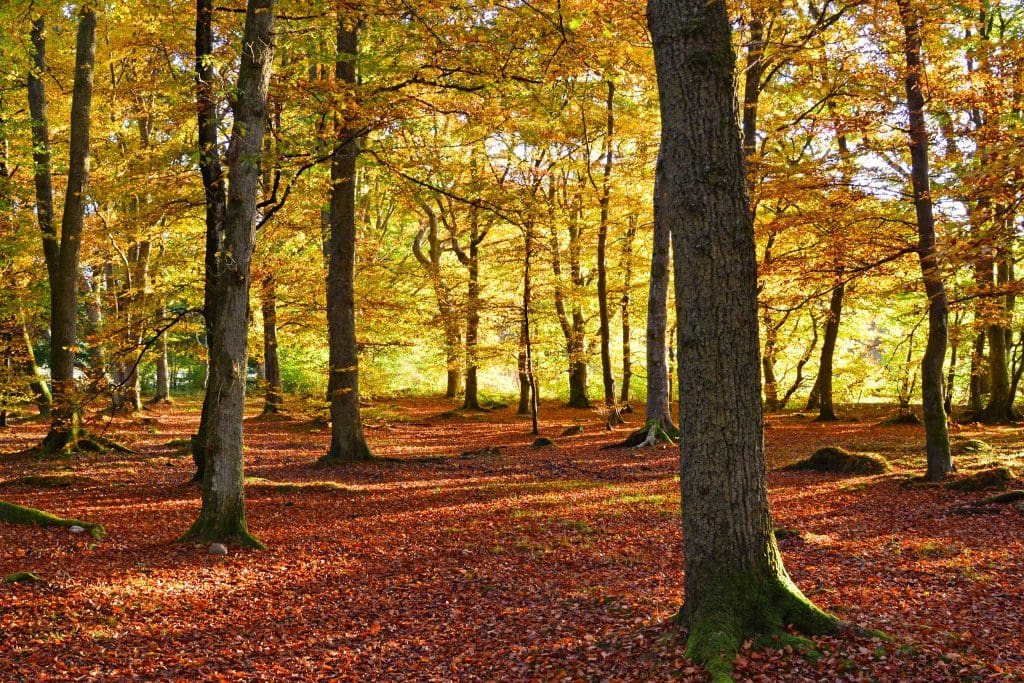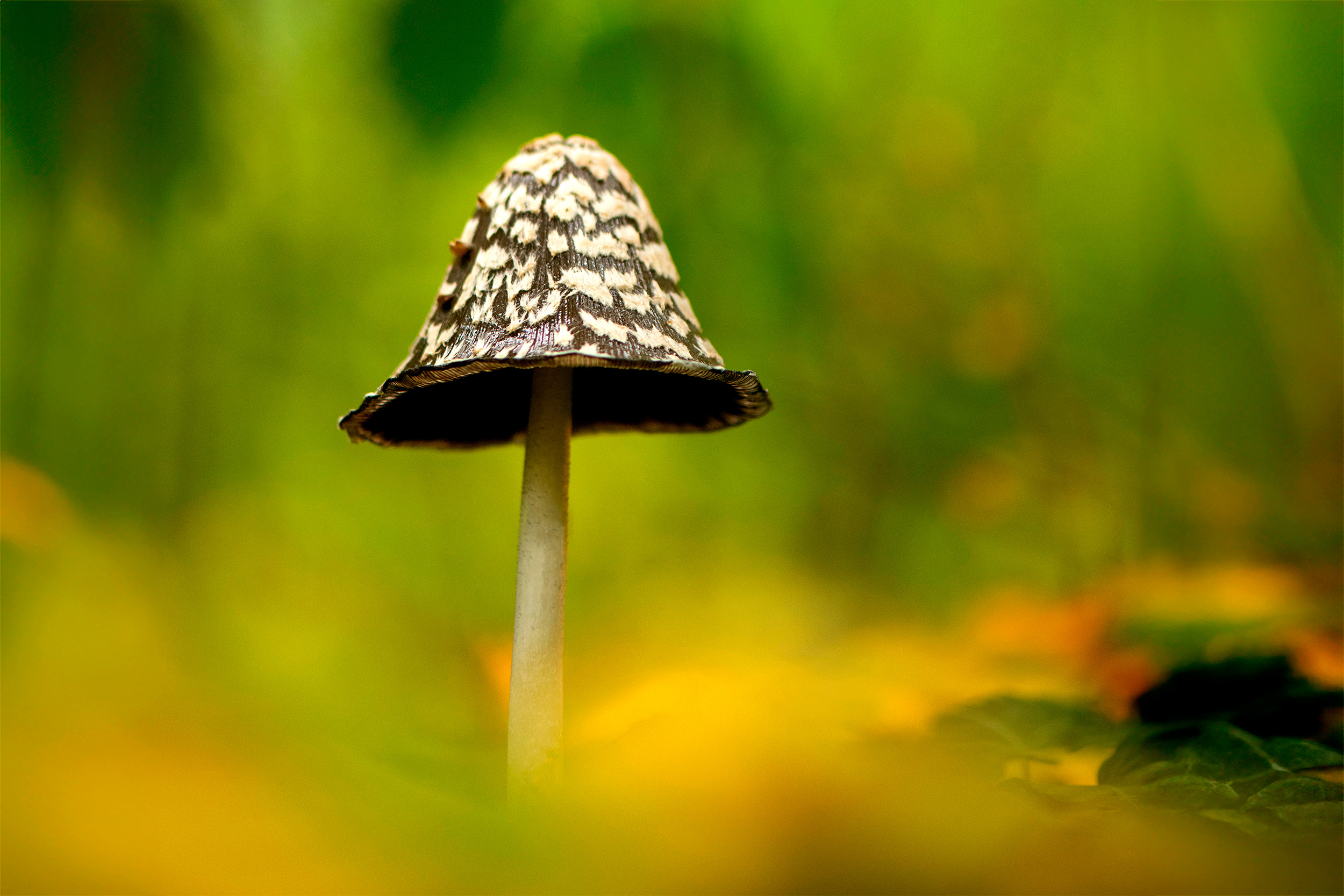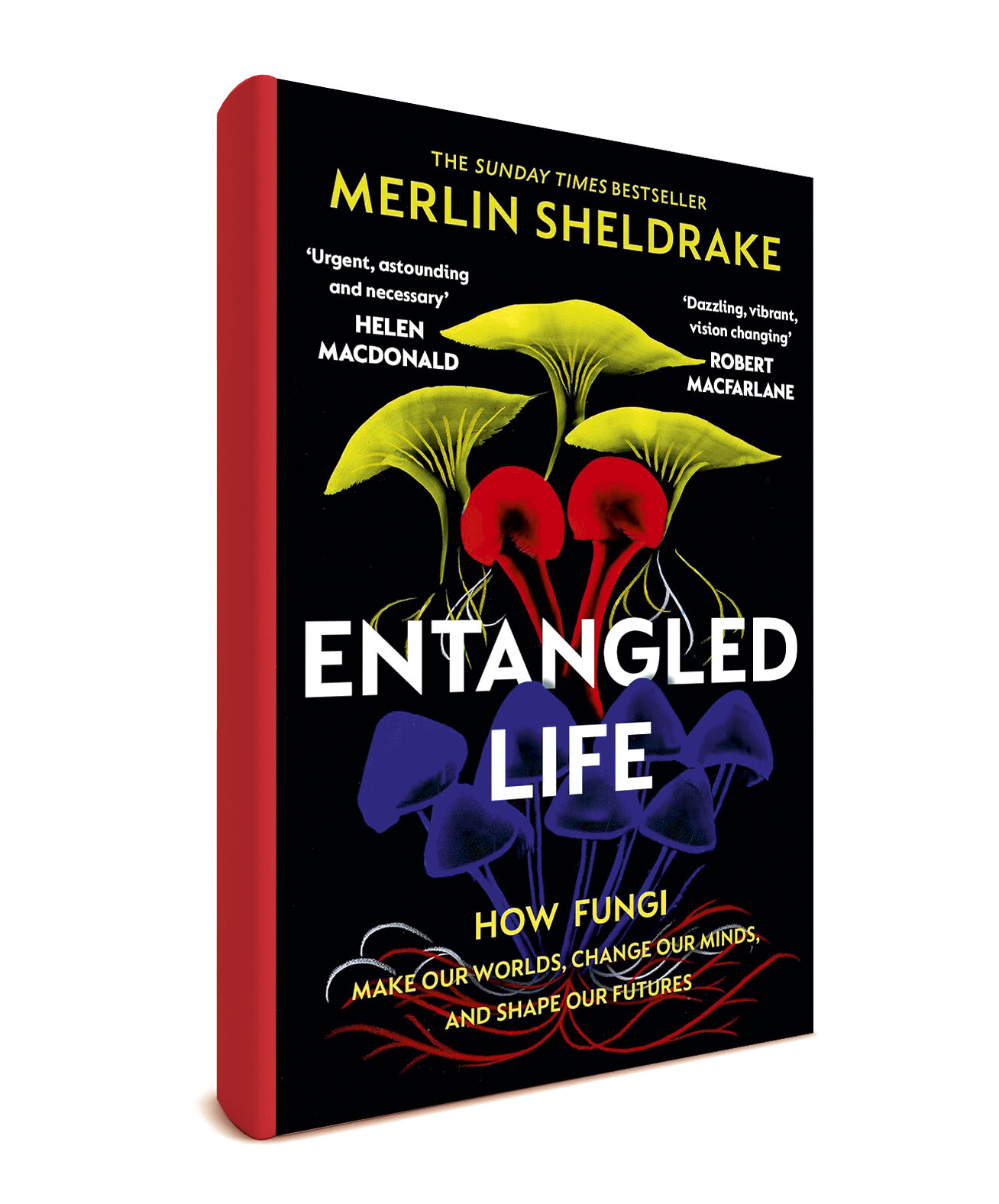
Common Bird’s Nest. Photo: Chase G Mayers (Wiki Commons)
Common Birds’ Nest
Young fruitbodies have a velvety, protective yellow skin, which breaks to reveal egg-like packets of white spores sat within the fruitbody ‘nest’. Despite being tiny (the fruitbodies measure up to 1cm wide), the ‘nest’ can contain up to 20 ‘eggs’, which are dispersed by raindrops. This fungus is widespread and occurs singularly or in clusters. This species is typically found on decaying wood and fruits in autumn.

Green Elf Cup. Photo: Holger Krisp (Wiki Commons)
Green Elf Cup
The tiny cup can measure up to 1cm wide and is bright blue-green with a wavy margin, a pale underside and a short, dark, tapering stem. Spores are white and produced on the inner-cup surface. It fruits all year round and is widespread, found in clusters on broadleaf dead wood – especially oak. The presence of the fungi can be detected in the absence of fruitbodies, as the mycelium stain the wood green as it grows inside.
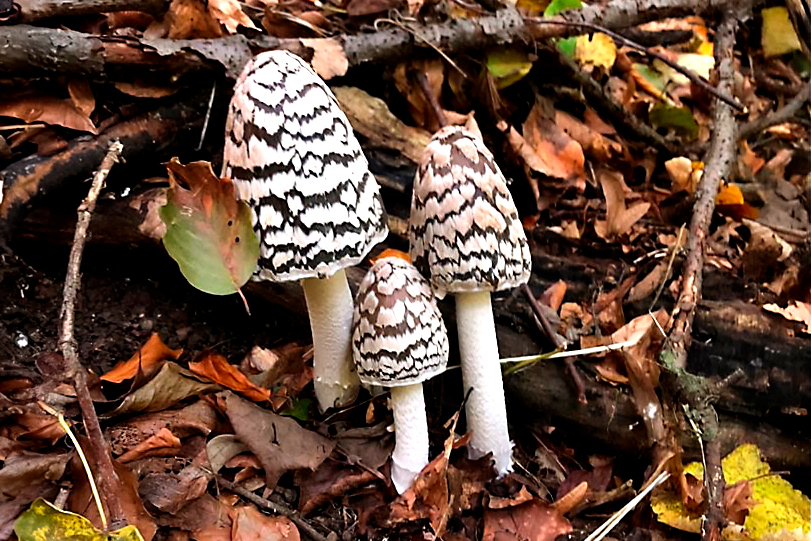
Magpie Inkcap. Photo: Ana Duric (Wiki Commons)
Magpie Inkcap
The cap starts out egg-shaped and white. It later opens, forming the shape of a long bell (up to 6m wide). As the cap breaks open with age, a brown-black background emerges, resulting in black and white markings. Later, the cap liquifies into an ink of spores, turning the young white gills black. This fungi is widespread and fruits during the autumn. It typically either grows singularly or in small groups in broadleaf woodlands under Beech trees or, sometimes, oaks.
‘Remember! Don’t eat the fungi you find. Many species are poisonous’
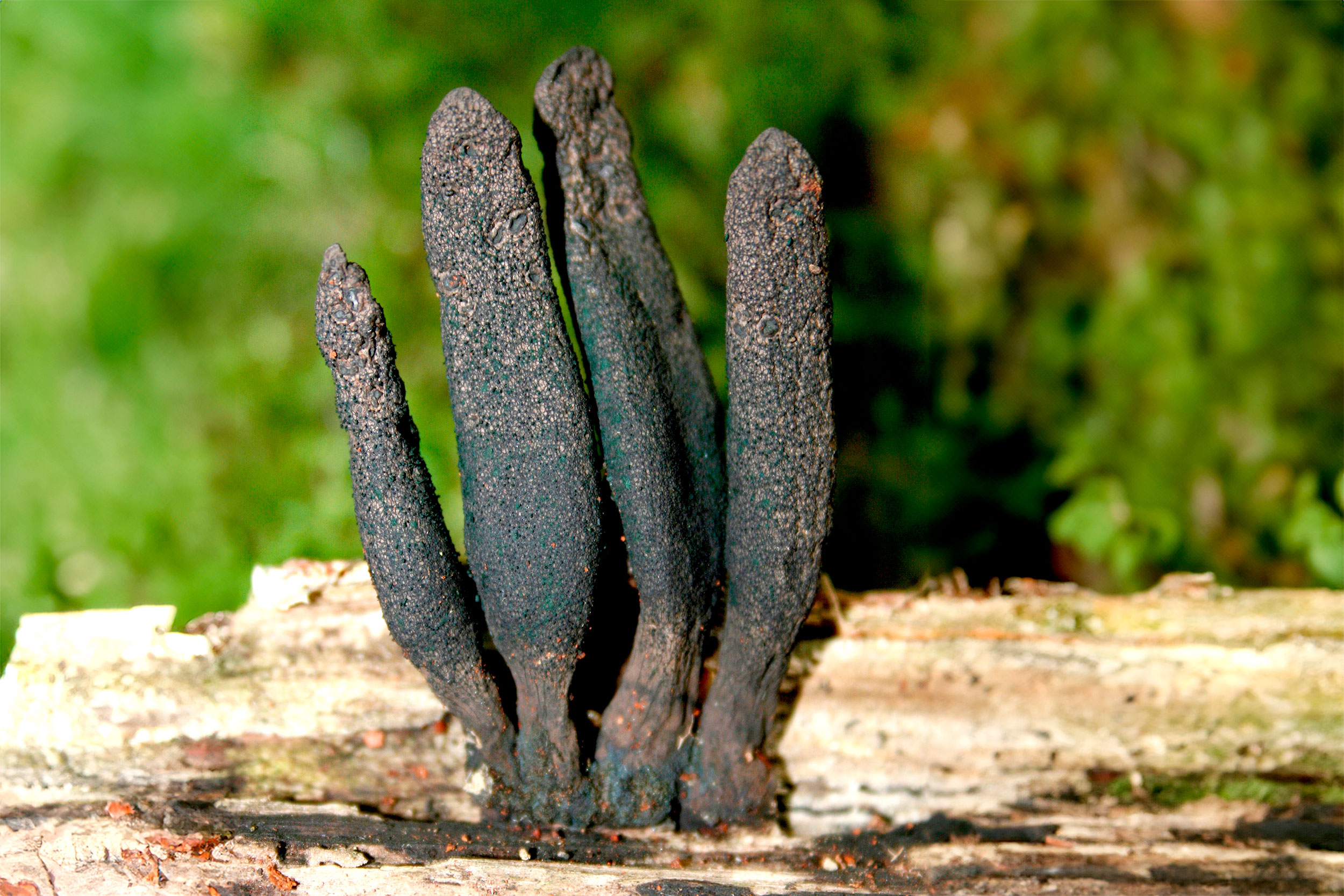
Dead Man’s Fingers. Photo: Sabena Jane Blackbird (Alamy Stock Photo)
Dead Man’s Fingers
This spooky fungus looks like swollen black fingers reaching up from under the ground, with each ‘finger’ standing about 3-10cm tall. Younger fruitbodies are grey-brown and have short, brittle stems that are found on the dead wood of broadleaf trees, particularly Beech. The inner flesh is tough and white, with a hard black surface formed of hundreds of tiny black flasks from which the spores are ejected. This species is widespread and fruits all year round.
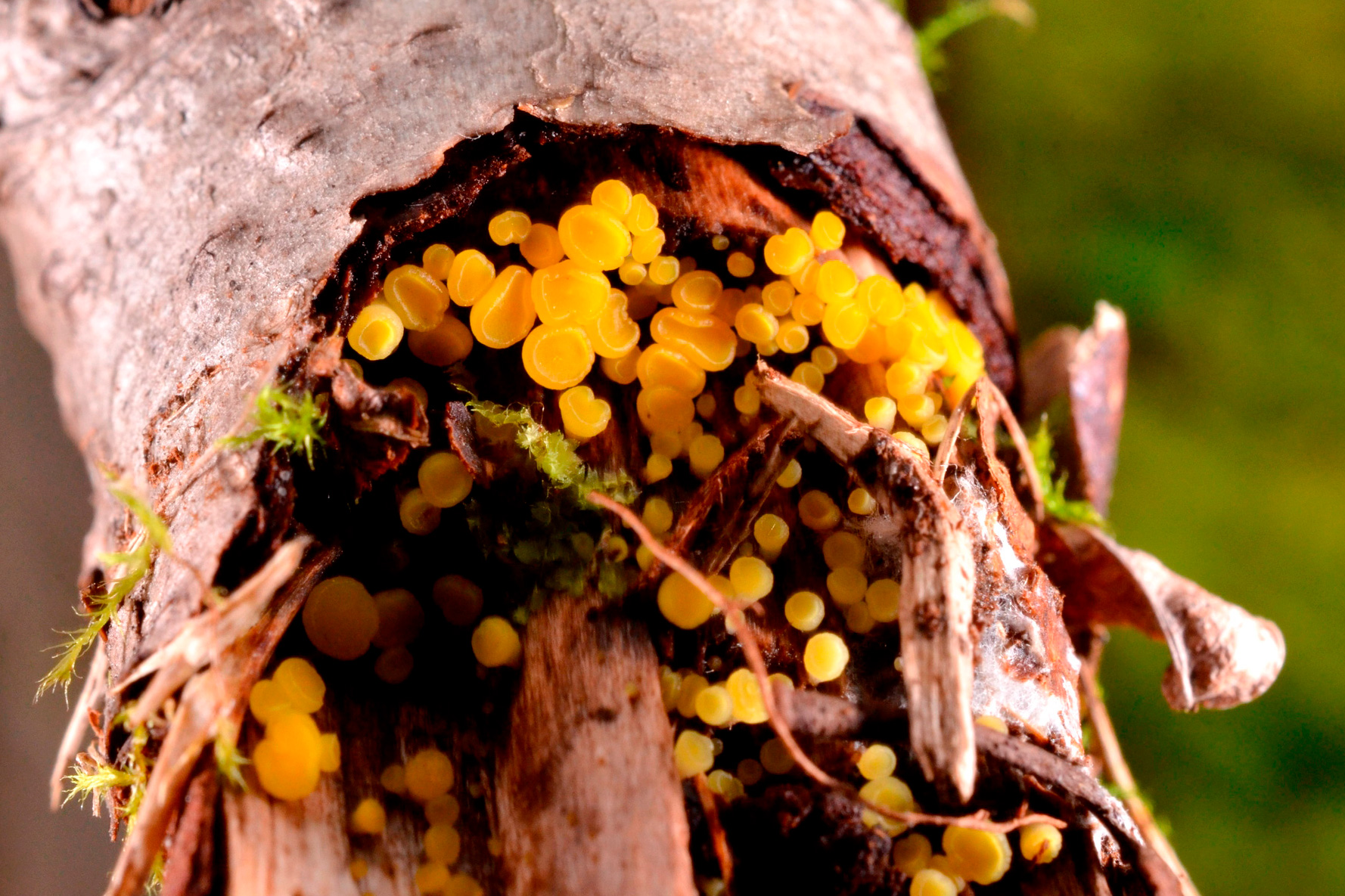
Lemon Disco with 14-spot Ladybird. Photo: Nick Upton (Getty Images)
Lemon Disco
Pictured here with a 14-spot Ladybird, this showy fungus also goes by ‘yellow fairy cups’. The ‘citrina’ in this fungus’ scientific name, Bisporella citrina, refers to the lemon yellow of the fruiting bodies, although they can often turn a shade of orange with age. The fairy cups are each only around 0.3cm across but are rarely alone, as wood can become covered in ‘swarms’ of these brightly coloured discs. So, even though the individual cups are tiny, the bright yellow colour and swarm make them easy to spot in autumn and winter, in woodlands with deciduous trees such as oak and Beech, on which the lemon disco fungus grows.
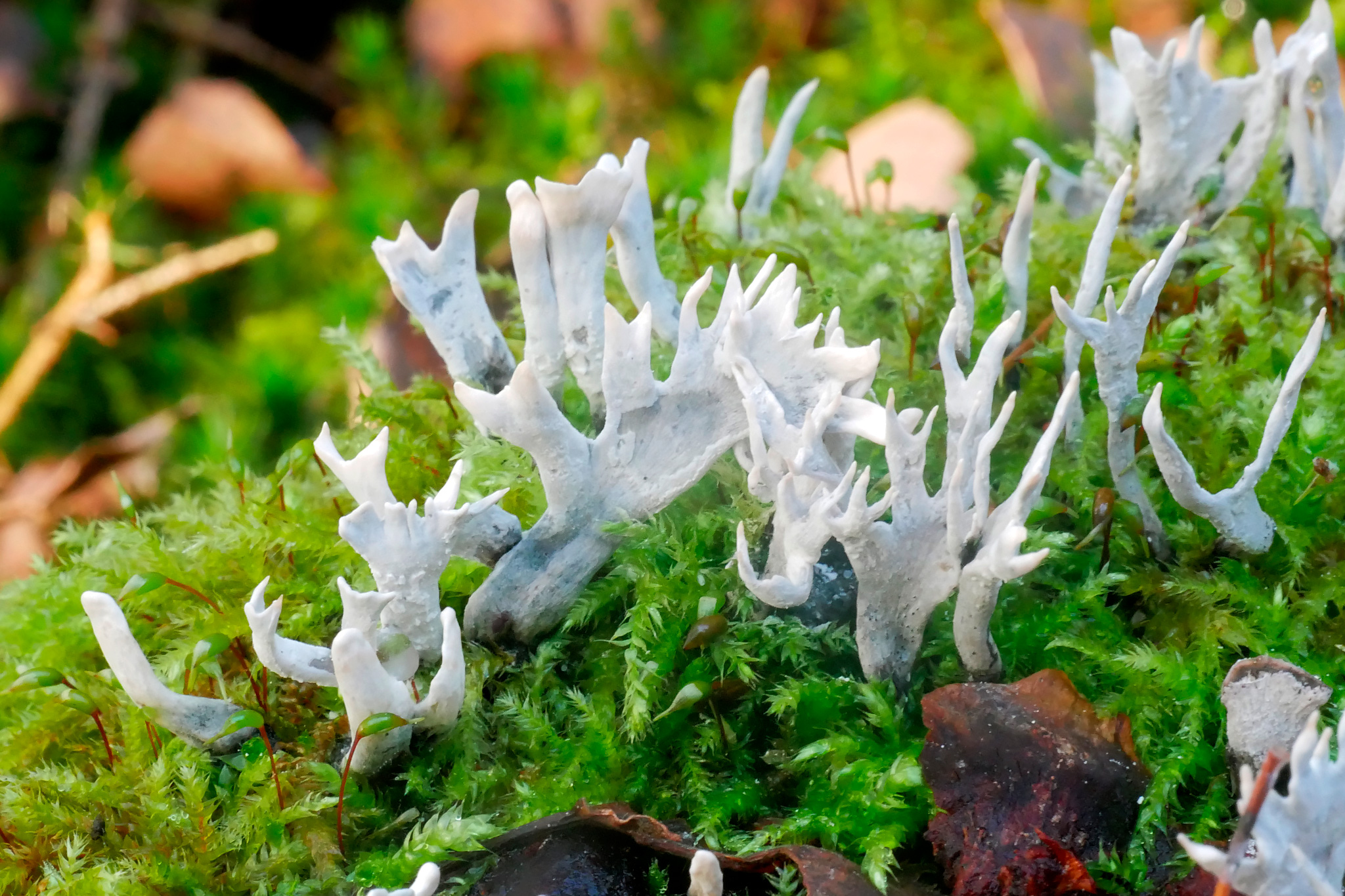
Candle-snuff Fungus. Photo: Christian Weinkötz (Getty Images)
Candle-snuff Fungus
This fungus is so-named because it resembles a snuffed-out candle wick. The fruiting bodies are long and thin, growing up to 6cm tall. While it may be small, the Candle-snuff Fungus is said to contain anti-viral properties and compounds that are active against some tumours in humans. The wick-like stem typically has several branches like a deer’s antler. The fruiting bodies are black and slightly hairy at the base, and they are progressively covered upward in a white powder produced by asexual spores. It is a widespread and very common species that can be seen throughout the year on decaying wood from broadleaf trees.
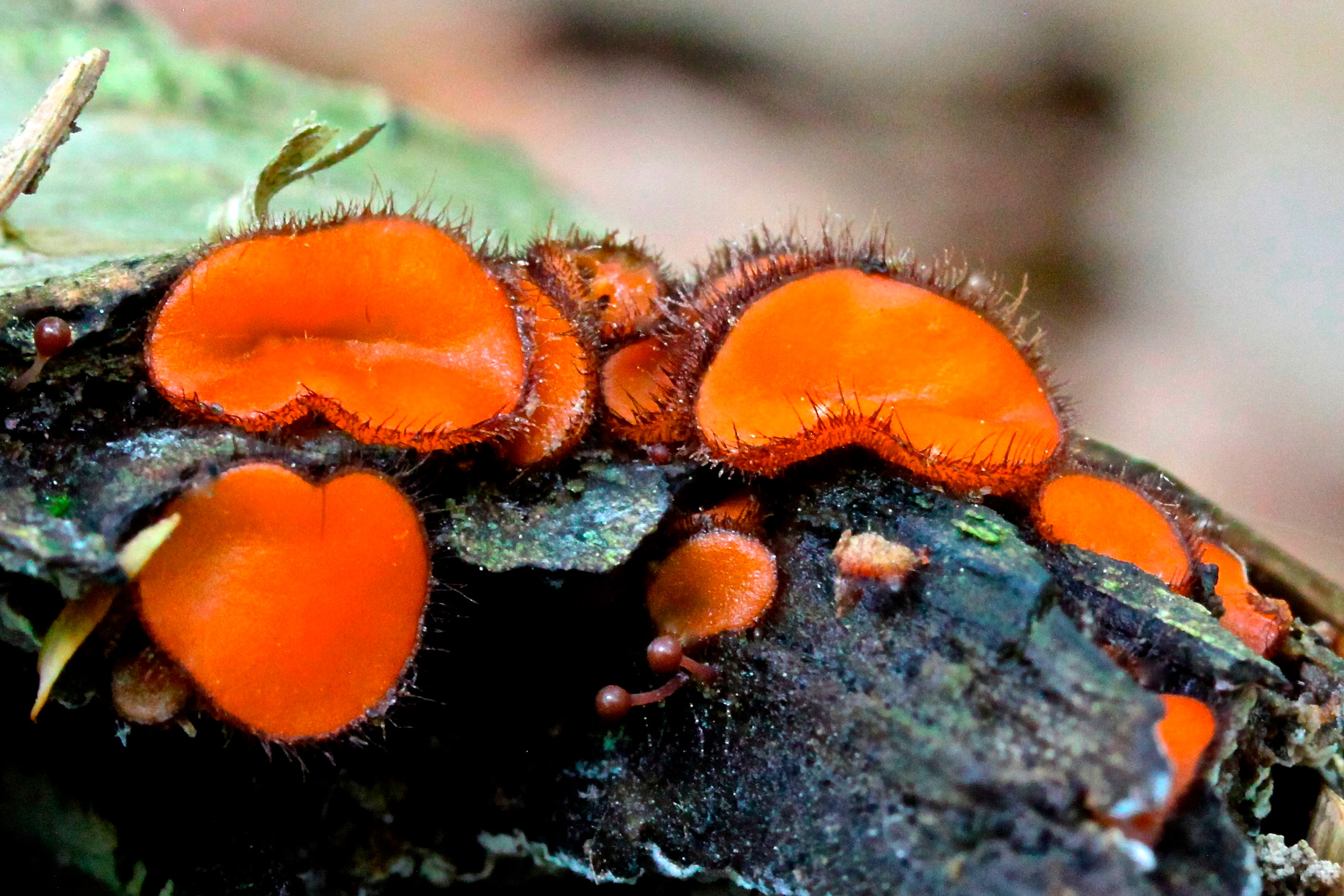
Common Eyelash. Photo: DP Wildlife Fungi (Alamy Stock Photo)
Common Eyelash
Although a widespread and common fungus, the fruiting bodies of this species have an unusual feature – they have long ‘eyelashes’ along the outer edge. Of course, they are not really eyelashes, but long bristle-like hairs up to 0.2cm in length. The first part of its scientific name, Scutellinia scutellate, is Latin for ‘like a small shield’. This is because the fruiting bodies become a flat disc up to 1cm across, often smaller, although they are rounded when they first appear. The fruiting bodies are bright scarlet on the inner surface, and the margin and outer surface is brownish orange. They are occasionally solitary but usually grouped or clustered on moist, rotting wood, frequently in damp places.
RSPB Shop
You might also like
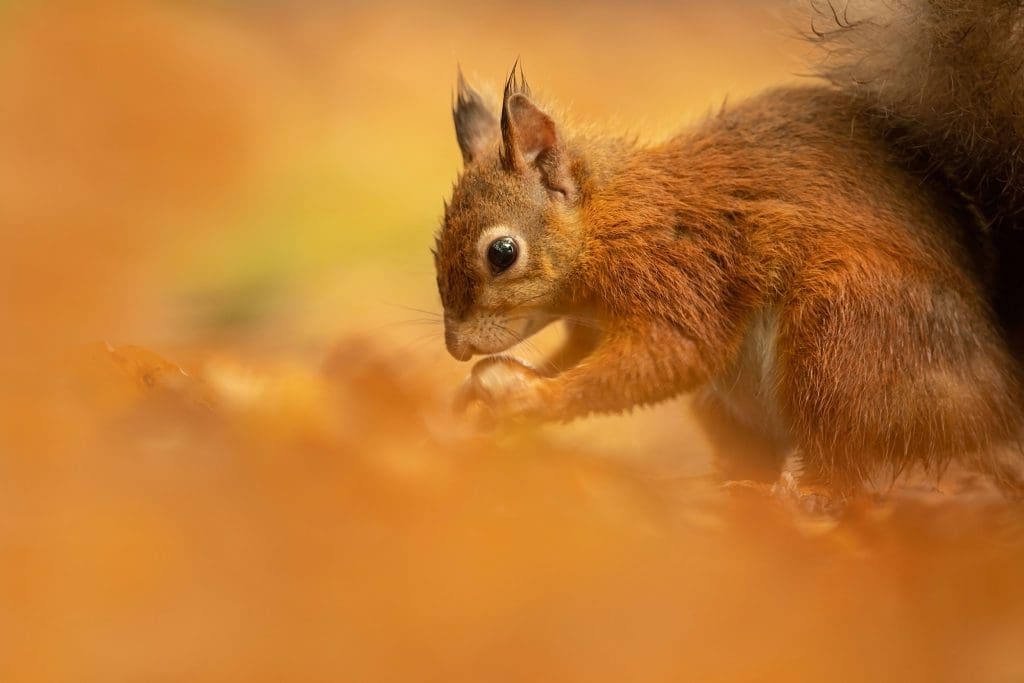
Capturing colour in autumn
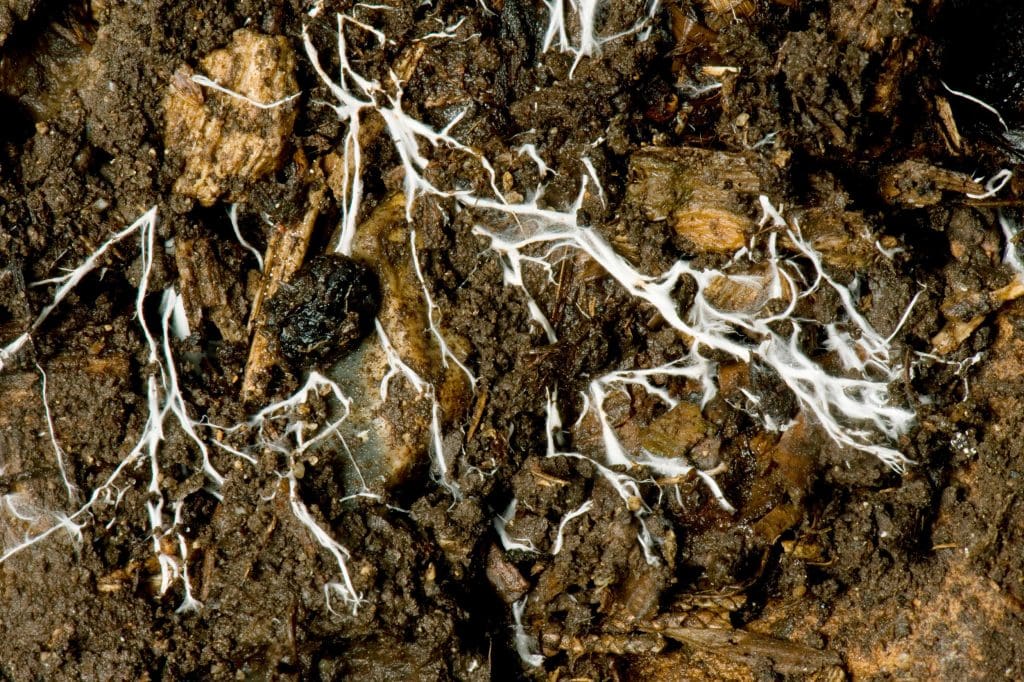
Wood wide web
